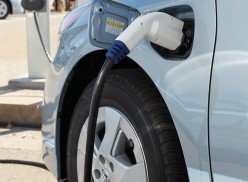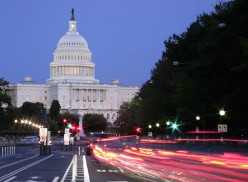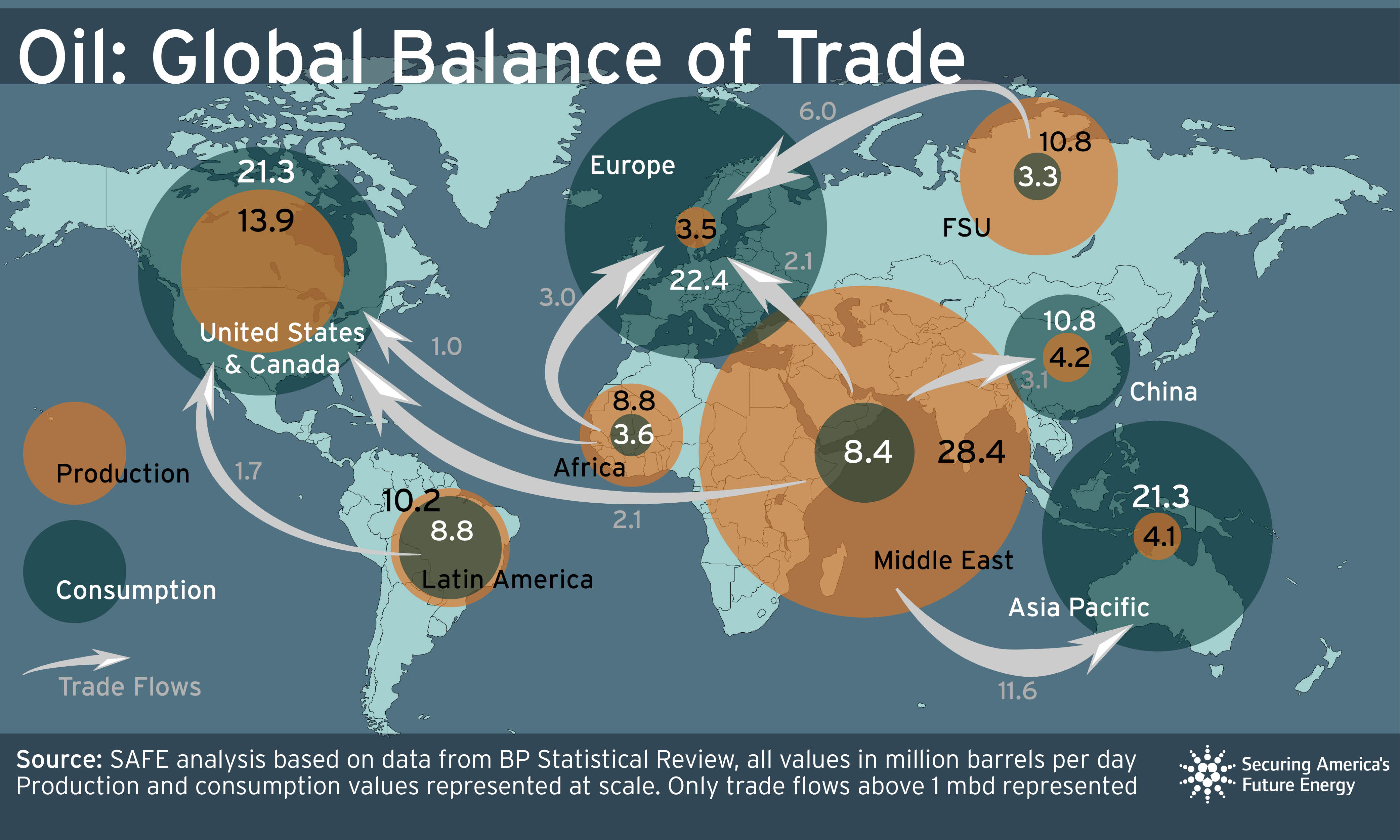By: Ayelet Zamek, MINVEST Delegation Coordinator for the Center for Critical Minerals Strategy, SAFE
The pace of critical minerals dealmaking has not slowed since the announcement of the new United States-Australia Framework for Securing of Supply in the Mining and Processing of Critical Minerals and Rare Earths on October 20. President Trump’s visit to Asia this week has brought a flurry of new agreements on critical minerals supply chains and trade with Japan, Cambodia, Malaysia, and Thailand, as well as a forthcoming trade deal with South Korea.
At first glance, the Australian and Japanese frameworks and the series of deals with the Southeast Asian countries appear repetitive; however, the nuances reveal different strategic priorities, industrial positions, and geopolitical relationships. Together, they underscore how the United States is adapting its minerals diplomacy across different partners and levels of economic development. This analysis outlines key commonalities and differences among the latest critical minerals deals in Asia.
U.S. Critical Minerals Deals in Asia at a Glance
| Australia | Japan | Malaysia | Thailand | Cambodia | |
| Relation to Trade Deal | No | Yes – Investment announcements delivered on July trade deal | Yes – Critical Minerals MOU signed alongside reciprocal trade agreement | Yes – Critical Minerals MOU signed alongside framework for reciprocal trade agreement | Yes – Critical minerals provisions included within reciprocal trade agreement |
| Commodity-Focused | No | No – Addresses derivatives | Yes – Rare earth elements | No | No |
| Specific Projects Identified | Yes – 8 | Yes – 4 | No | No | No |
| US-bound Investment Required | No | $550 billion | $70 billion over the next 10 years | No | No |
| Asset Sale/ Investment Scrutiny | Yes | Yes | Yes | No | Yes |
| High-Standards Marketplace | Yes – “within a pricing framework including price floors or similar measures” | Yes – and “pricing measures” | Yes – “protected by a pricing framework including price floors or similar measures” | Yes – “within a pricing framework including price floors or similar measures” | No |
U.S.-Japan Framework
In our analysis of the U.S.-Australia Framework, we highlighted how the deal reflected potentially converging attitudes towards flashpoint policy topics. The U.S.-Japan Framework for Securing the Supply of Critical Minerals and Rare Earths Through Mining and Processing bears out this assessment; it is nearly identical to the Australian framework, demonstrating consensus around the need for aligned approaches to leveraging strategic reserves and stockpiling authorities, exploring pricing mechanisms, and cooperating with partners.
Like the Australian deal, the U.S.-Japan Framework announcement included funding commitments, this time not only for mining and minerals projects but also for downstream investments:
- $2 billion for the construction of a copper smelter and refining facility located in the Western United States (Falcon Copper)
- Up to $3 billion for the construction of a greenfield ammonia and urea fertilizer facility (Carbon Holdings)
- $500 million for the construction of a high-pressure, high-temperature (HPHT) diamond grit manufacturing facility (Element Six Holdings)
- $350 million for the construction of a lithium-iron-phosphate production facility (MitraChem)
- Up to $15 billion for energy storage systems and advanced electronics supporting U.S. supply chains (Panasonic)
The similarity between the frameworks bolsters the idea that the U.S.-Australia Framework serves as a template for future critical minerals agreements with allies, but the Japan deal carries unique features worth unpacking. Together, these announcements show how the United States is structuring deals to benefit from each partner’s comparative advantages.
First, the U.S.-Japan Framework was developed within the context of broader bilateral trade negotiations, and the imprint of those negotiations is evident in the project announcements. In July, Japan committed to investing $550 billion in the United States in response to the Trump Administration’s decision to raise tariffs to 25 percent. The slate of Japanese investments in projects accompanying the U.S.-Japan Framework in sectors like energy, AI, manufacturing, and mining are all part Japan’s investment pledge. In contrast, both the United States and Australia committed funds to support projects as part of the U.S.-Australia Framework, and all of the announced projects are in Australia, reflecting the country’s strong project pipeline and abundant resource base.
The forthcoming trade deal with South Korea is already starting to look more like the Japanese deal, featuring an investment pledge of $200 billion or up to $20 billion per year from South Korea into the United States. For now, the U.S.-Korea Fact Sheet published by the White House provides the clearest indication of what to expect. It includes a commitment to “to stabilize and diversify the critical-mineral supply chain through public-private collaboration in the mining and refining of such minerals” and the partnership between U.S. company ReElement Technologies and POSCO International to develop a vertically integrated rare earth separation, refining, and magnet production complex in the United States, previously announced in September.
Second, the U.S.-Japan Framework places stronger emphasis on derivative and downstream products, such as “permanent magnets, batteries, catalysts, and optical materials,” and encourages collaboration between upstream and downstream companies. This downstream focus, reasonably absent in the U.S.-Australia Framework, reflects Japan’s position in the critical minerals supply chain as processor and end user, rather than a producer. The inclusion of derivative products also signals recognition that supply chain resilience depends as much on midstream and downstream capacity as on mining output. Securing downstream use through offtake agreements is increasingly required to make upstream projects bankable. Moreover, without expanded processing, diversification efforts risk reinforcing competitors’ dominance.
Japan’s long experience navigating Chinese rare earth supply disruptions underscores this point. Through substitution, recycling, and strategic overseas investments, representing $1.2 billion in government support, Japan cut its reliance on Chinese rare earth elements and permanent magnets from 90 percent to 60 percent within two years. Yet imports from China have recently crept upward again, and Japan was reportedly among the first to revive exports of heavy REEs post China’s April 2025 export controls. While the United States possesses greater domestic resources than Japan, it faces similar vulnerabilities in the magnets, batteries, and other derivative material supply chains. With new magnet manufacturing capacity expected to come online in the United States later this year, there is still a need to shore up the rest of the supply chain, especially capacity for separation and metallization to close remaining gaps. The U.S.-Japan Framework provides further impetus to identify and co-develop mutually beneficial projects for the United States and Japan, both bilaterally and with third countries.
On pricing, while both the Australian and Japanese frameworks address price and support the development of a standards-based marketplace, the U.S.-Australian Framework goes farther by calling for “price floors or similar measures,” aimed at protecting domestic critical minerals markets, while the U.S.-Japan Framework supports “pricing measures to support alternative projects and such high-standard markets.” The Memoranda of Understanding with Malaysia and Thailand include very similar language to the U.S.-Australia Framework on high-standards marketplaces, aligning with their visions to become critical minerals producers, explored later in this piece. Both frameworks also include stockpiling measures, though the U.S.-Japanese Framework is vaguer about specific mechanisms. The broad alignment in principle on these two topics alludes to the ongoing debate on how to approach price and stockpiling in practice.
Although both the Japanese and Australian frameworks contain similar language on cooperation with third countries, Japan’s commitment carries weight. Japanese agencies, including Japan Organization for Metals and Energy Security (JOGMEC), are regarded as some of the most active and risk-tolerant government funding sources in the sector, with a strong mandate driven by Japan’s lack of domestic resources and high industrial demand. The U.S.-Japan Framework has the potential to further strengthen cooperation among Japanese and U.S. funding agencies, such as the U.S. Export-Import Bank and the International Development Finance Corporation, creating a pathway for joint project development.
As with the U.S.-Australia Framework, what will become of existing initiatives in the context of cooperation with third countries remains unclear. For instance, the United States has now signed new critical minerals frameworks with all members of the Quad – except India. With no Quad Leaders’ Summit date in sight, it seems likely that the Quad Critical Minerals Initiative will stall before implementation. More broadly, it remains to be seen whether the Trump Administration’s pattern of bilateral dealmaking will augment or dilute multilateral initiatives, such as the Minerals Security Partnership and the G7 Critical Minerals Action Plan.
In the case of the G7, the United States’ bilateral efforts in Australia and Japan may serve as a signal-flag for its multilateral agenda. The timing is particularly compelling, considering the deals were cut days before the G7 Energy and Environment Ministers are set to convene in Toronto. The U.S.-Australia and U.S.-Japan frameworks generally align with the G7 Critical Minerals Action Plan, and it is possible that this message will carry through in the forthcoming G7 standards-based roadmap and other G7 efforts.
Southeast Asian Deals
At the ASEAN Summit, the United States signed new memoranda of understanding with Thailand and Malaysia on critical minerals and reciprocal trade agreements with Malaysia and Cambodia. (The United States and Vietnam reached a framework for a similar trade deal, though it currently does not cover critical minerals.)
Of these, the agreements with Malaysia are the most detailed. Malaysia, like Japan, pledged $70 billion investment in the United States over the next decade (or nearly 16% of the country’s current GDP), covering a range of sectors. As part of the trade negotiations, Malaysia committed “to refrain from banning, or imposing quotas on, exports to the United States of critical minerals or rare earth elements” and “to ensure no restrictions are imposed on the sale of rare earth magnets.” This focus aligns with Malaysia’s ambition to become a rare earths hub, including processing and developing its own domestic rare earth resources. Lynas Rare Earths, an Australian company, already operates the largest rare earth element processing facility outside of China, using feedstock from Australia to supply customers in Japan, Europe, and the United States.
On the heels of the United States’ deal with Malaysia, Lynas announced its plans to construct a new 5,000 tpa rare earths separation facility in Malaysia, and earlier this month Lynas and Noveon Magnetics, the only currently operating U.S. producer of rare earth magnets, struck a partnership to develop a permanent magnets supply chain for U.S. defense and commercial sectors. These announcements are consistent with the rising market demand as the United States and others’ push to secure rare earths supply chains in the face of Chinese dominance and increasing export controls. (Read our analysis of the October 9 export controls here.) Indeed, reports suggest that Noveon had to turn away customers due to supply constraints.
The biggest development from the reciprocal trade agreement with Cambodia is the opening of its mining sector to U.S. investment and exportation, a notable step given Cambodia’s critical mineral resources are largely unexplored. Similarly, the U.S.-Thailand MOU calls for cooperation to assess Thailand’s critical mineral resource base, potentially setting the stage for future project development.
A recurring theme across the U.S.-Australia Framework, U.S.-Japan Framework, and new Southeast Asian deals is enhanced scrutiny of foreign investment in sensitive sectors, specifically critical minerals. The U.S.-Malaysia deal calls for establishing a national security review mechanism for inbound investment, explicitly naming critical minerals as a focus area. In a similar vein, the U.S.-Cambodia trade deal includes provisions for sharing information the United States on third-country investment activities in sensitive sectors. These measures parallel those in the U.S.-Australia and U.S.-Japan Frameworks on asset sales, which commit partners to strengthening and developing authorities and tools for reviewing and deterring critical minerals and rare earth asset sales with national security implications.
Heightened scrutiny of inbound investment is an implicit countermeasure to Chinese influence, as PRC-backed acquisitions and financing have become modus operandi for securing overseas footholds in strategic sectors, including mining. Investment screening for economic or national security purposes is complex, requiring access to detailed, confidential business information and the appropriate government authorities to intervene in transactions. Domestically, the United States relies on the Committee on Foreign Investment in the US (CFIUS) system to review foreign acquisitions and other such transactions involving U.S. assets. Internationally, the United States has a more limited set of tools to intervene in transactions in third jurisdictions, which can lead to adverse outcomes. A well-known case is Freeport-McMoRan’s 2016 sale of the Tenke Fungurume mine, then the only U.S.-owned cobalt mine in the Democratic Republic of the Congo, to a subsidiary of China Molybdenum.
Through these new frameworks and MOUs, the United States is applying diplomatic tools to encourage partners to adopt stricter investment screening measurers. Even absent a CFIUS-esque system, though the Malaysia provisions seem to allude to implementing such a model, greater transparency and information-sharing ahead of transactions in sensitive sectors could help the United States and partners to intervene, for instance by identifying alternative investors or buyers.
It is important to note that the deals do not substantively address the issue of Chinese circumvention via transshipment through Southeast Asia, despite the Trump Administration’s warning of 40% tariffs on transshipped goods.
The Bottom Line
While the recent deals between the United States and Cambodia, Malaysia, and Thailand are less robust than the Australian and Japanese frameworks, they demonstrate the Trump Administration’s interest in cultivating broader relationships in Asia through critical minerals dealmaking. Taken together, these deals mark a rapid expansion of U.S. critical minerals diplomacy in the region, reflecting both continued coordination with established allies and engagement with emerging partners. Whether these agreements translate into sustained cooperation and real project delivery will depend on follow-through, financing, and the ability to reconcile differing priorities among partners.







